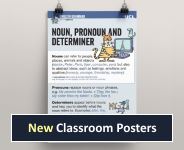Phonetics and phonology - Vowels
In the starter activity, we asked the question 'How can we write down speech sounds? For example, how can we capture the difference between a northern British accent saying bath and a southern British accent saying bath?
The answer is by using the international phonetic alphabet, or IPA for short. This is an internationally recognized system for transcribing the sounds of a language. The full IPA captures all the known sounds across the world's languages and includes 107 sounds (with more being added, as new sounds are discovered!).
To make things easier, we will only be looking at the phonetic alphabet for English, which has 44 sounds.
Inidividual speech sounds are called phonemes. A single phoneme may be represented in writing by one, two, three or four letters. To demonstrate, let's see how cat, catch and caught are transcribed. Note that we use slashed brackets when transcribing speech sounds in the phonetic alphabet:
- The word cat has three letters and three phonemes: /kæt/
- The word catch has five letters and three phonemes: /kætʃ/
- The word caught has six letters and three phonemes: /kɔ:t/
Let's now look at the English phonetic alphabet. We'll do this by grouping sounds into vowels and consonants, and then exploring their various sub-groups.
Vowels
Vowels are made by pushing air up from the lungs and allowing it to pass through the vocal tract without obstruction. They are normally voiced, that is, their production involves vibration of the vocal folds (this contrasts with unvoiced, where there is no vibaration of the vocal folds). The easiest way to know if a sound is voiced is to place your fingers and thumb on your throat and produce a sound. If you feel the throat vibrating or 'buzzing', then it is a voiced sound. Try it now with a range of vowels.
Vowels can sub-grouped according to their length - they can be short or long.
Short vowels
There are seven short vowels in English:
- ɪ as in quick and bit
- e as in friend and said
- æ as in spat and mat
- ʌ as in drunk and tough
- ɒ as in spot and wasp
- ʊ as in put and full
- ə as in water and banana
Long vowels
There are five long vowels in English:
- i: as in feet and speak
- u: as in moon and true
- ɜ: as in heard and third
- ɔ: as in taught and port
- ɑ: as in bar and father
Diphthongs
Diphthongs are 'gliding vowels', where one vowel sound glides into an other one, as a result of the lips or tongue moving. A diphthong is a change in vowel quality, whose sound changes within the same syllable.
There are eight diphthongs in English:
- eɪ as in pray and sleigh
- ɔɪ as in joy and boy
- aɪ as in fry and high
- aʊ as in cow and now
- əʊ as in go and blow
- ɛə as in care and flair
- ɪə as in hear and pier
- ʊə as in pure and tour
Beware that a diphthong is not just a combination of two vowels. For example, in the two-syllable word seeing, /i:/ becomes /ɪ/ but it is not a diphthong because /i:/ and /ɪ/ are not in the same syllable.
Welcome!

Englicious is totally free for everyone to use!
But in exchange, we ask that you register for an account on our site.
If you’ve already registered, you can log in straight away.
Since this is your first visit today, you can see this page by clicking the button below.
- Printer-friendly version
- Log in to view or leave comments

